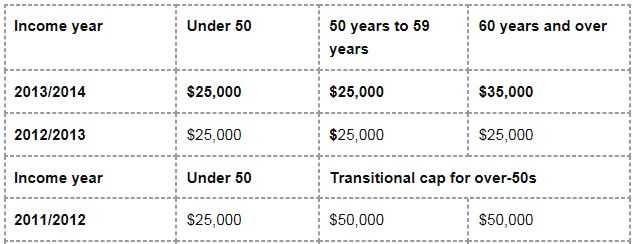Knowing how much money you can contribute to your superannuation is one of the most important aspects of a retirement savings strategy. With several changes of government and countless shifts in attitudes toward super over the last few years, the situation has only become more confusing.
Super contributions are separated into two categories, Concessional Contributions and Non-Concessional Contributions. Another way to consider these is contributions that you have claimed a tax deduction for, and those that you have not. Contributions made by your employer are concessional contributions as you have not been taxed on this income in your personal tax return.
The limit on Concessional Contributions is the source of the most confusion, having changed multiple times since 2009. The following table outlines the contributions cap over the 2012, 2013, and 2014 Financial Years.

It is important to remember that only the self employed or the substantially self employed (at least 90% of income from business) can make Concessional Contributions out of their own pockets. If you are a salary and wage earner who would like to increase their contribution to super, you can do so by salary sacrificing a portion of your income.
What are the consequences of exceeding the cap?
In the past, a member who exceeds the contributions cap has had to pay tax of 46.5% on the entire contribution. However, from the 2014 Financial Year onwards, the ATO has stated that it will allow members to withdraw any excess contributions and simply pay their marginal tax rate as well as an interest charge. Regardless, it is important to keep these limits in mind when formulating a retirement savings strategy.
If you have any questions regarding your superannuation or contribution limits, feel free to contact the superannuation team here at CNS.
Stay tuned on the Blog in the new year for more information regarding Non-Concessional Contributions.

